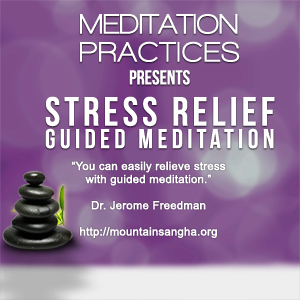Meditation and the Science of Human Flourishing was the name of a workshop which took place last Saturday, June 11, 2016 with Yongey Mingyur Rinpoche and Dr. Richie Davidson at Stanford University sponsored by The Center for Compassion and Altruism Research and Education (CCARE) and Tergar, Rimpoche’s meditation community.
Richie talked about how he was discouraged from investigating meditation from the neuroscientific point of view because it would imply career death, but when he met the Dalai Lama in 1992 and participated in the Time and Life Conferences the Dalai Lama mandated that he, in fact, should study meditation.

Richie Davidson and Mingyur Rimpoche, photo © by Jerome Freedman
He began with meditators with 30,000 or more hours of practice and Mingyur Rimpoche and Matthieu Ricard were two of the subjects he used in his fMRI (functional magnetic resonance imaging) scans in which he found that certain parts of the brain were active while the monks were meditating in the machine which was substantially different from the scans of non-meditators.
Mingyur Rimpoche talked about the panic attacks he had as a youngster and how they shaped his life and his meditation.
In introducing the meditation practice which follows, he told the story of a Tibetan monk who left the monastery to become a taxi driver in New York City.
The taxi driver’s only purpose was to get his passengers to their destination, even though they would get in his cab and behave in a large variety of ways.
Rimpoche connected the passengers in the taxi with the thoughts and emotions that pass through our mind during meditation, where our only purpose is to sit quietly in awareness of everything that is going on in our bodies, feelings, perceptions, constructions and consciousness.
This led into a beautiful three part guided meditation practice, which you can find here:
- Body / Space / Mind awareness, in which we let our thoughts go like dropping off passengers at their destination.
- Breath awareness practice in our belly, chest or nostrils.
- Deep breath practice with exhalation through the mouth with a sound.
The session after the break began with Richie’s presentation of scientific data including the marshmallow experiment, neuroplasticity, epigenetics, bidirectional communication between the mind / brain and body, and innate basic goodness, (which was the topic elaborated on by Rimpoche during the afternoon session.
He also reported on the four neuroscientifically investigated constituents of well-being from the World Happiness Report of 2015, many of which overlap with the six emotional styles, which he outlined in his book, The Emotional Life of Your Brain: How Its Unique Patterns Affect the Way You Think, Feel, and Live–and How You Can Change Them.
The four constituents of well-being are
- resilience
- positive outlook
- attention / awareness
- generosity
The first three correspond to Richie’s emotional styles, the others being social intuition, sensitivity to context and self-awareness.
Rimpoche led a nice compassion meditation similar to Cultivating a Heart of Compassion.
One of the questions that came up during Richie’s talk had to do with children, and the response from Richie and Rimpoche was rather puzzling.
Aware of how dear children are to my teacher, Zen Master Thich Nhat Hanh, I got up and gave a short talk on his pebble meditation which received a tremendous applause and about two dozen people came up to thank me during the break and after the event.
Books by Richie Davidson
 |
The Emotional Life of Your Brain: How Its Unique Patterns Affect the Way You Think, Feel, and Live–and How You Can Change Themby What is your emotional fingerprint? Why are some people so quick to recover from setbacks? Why are some so attuned to others that they seem psychic? Why are some people always up and others always down? In his thirty-year quest to answer these questions, pioneering neuroscientist Richard J. … |
Books by Yongey Mingyur Rimpoche
 |
The Joy of Living: Unlocking the Secret and Science of Happinessby An illuminating perspective on the science of meditation—and a handbook for transforming our minds, bodies, and lives In The Joy of Living, world-renowned Buddhist teacher Yongey Mingyur Rinpoche—the “happiest man in the world”—invites us to join him in unlocking the secrets … |












.jpg)
You must be logged in to post a comment.